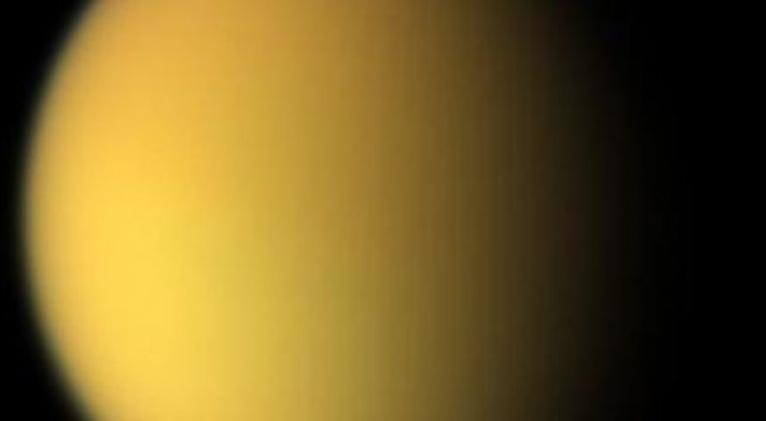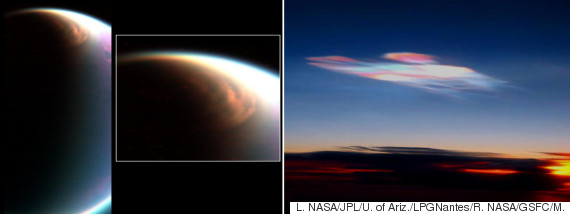Polar Winds On Saturn's Moon Titan Makes It More Earth-Like Than Previously Thought
especiales

Scientists previously discovered that Saturn's largest and haziest moon is the only object in the solar system -- aside from Earth -- to have rivers, rainfall and seas. Like Earth, it's bigger than the planet Mercury and has a rocky surface.
And now, scientists have found something else that Titan and Earth have in common: Polar wind. In fact, the widespread polar wind is driving gas from Titan's atmosphere out into space.
"We need to understand the mechanisms whereby Titan loses its atmosphere. We'd like to understand this better at Titan and at other objects," Dr. Andrew Coates, a physics professor at the University College London in England who led the polar wind research, told The Huffington Post in an email.
Coates and his colleagues discovered the escaping gas after analyzing data from NASA's Saturn-orbiting Cassini spacecraft's Plasma Spectrometer (CAPS) instrument, which had detected particles escaping from Titan's atmosphere. Based on the distinctive spectra of particles detected, the researchers concluded that there must be a widespread polar wind on Titan.
“Titan’s atmosphere is made up mainly of nitrogen and methane, with 50 percent higher pressure at its surface than on Earth,” Coates said in a written statement. “Data from CAPS proved a few years ago that the top of Titan’s atmosphere is losing about seven tonnes of hydrocarbons and nitriles every day, but didn’t explain why this was happening. Our new study provides evidence for why this is happening.”
(Story continues below image.)

This cloud in the stratosphere over Titan’s north pole (left) is similar to Earth’s polar stratospheric clouds (right). NASA scientists found that Titan’s cloud contains methane ice, which was not previously thought to form in that part of the atmosphere. Cassini first spotted the cloud in 2006.
Does yet another similarity between the mysterious Titan moon and our planet suggest that the strange moon could possibly host life? Not so fast, according to Coates.
"What it does have implications for is the atmospheric history of Titan over time," he said in the email. "As an astrobiological target, Titan is potentially interesting due to the hydrocarbon and nitrile species present, and the presence of a subsurface water ocean as shown in other studies. But it's thought Titan is and was too cold for life as yet - perhaps in a few billion years time when the Sun becomes a red giant and heats the outer solar system. More likely targets for past or present life are Mars, Europa and Enceladus."
A paper describing the new research was published online in the journal Geophysical Research Letters on June 18, 2015.













Add new comment